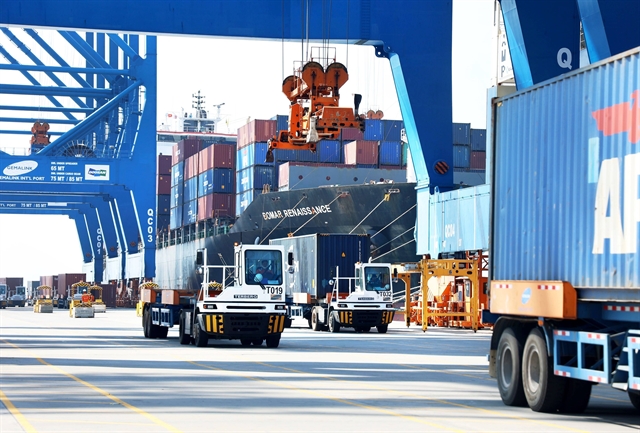The Vietnamese government is demonstrating a high determination in promoting public investment, focusing on numerous strategic infrastructure projects that connect economic centres. This will serve as an important launching pad for Vietnam to enter a new era – the era of the nation’s rise, according to HSBC.

HCM CITY — Việt Nam is likely to secure high annual growth of 8 per cent, or even double-digit rates after recording a 7 per cent expansion last year, according to Suan Teck Kin, executive director of Global Economics and Markets Research at Singapore-based United Overseas Bank (UOB).
The National Assembly (NA)’s recent decision to raise Việt Nam’s GDP growth target to at least 8 per cent in 2025 and double-digit rates in the 2026-2030 period shows a high level of consensus across the political system for the country's new development goals, despite many challenges facing the economy.
Suan Teck Kin said that achieving these targets will be a significant challenge. Among the risks, the US tariff policies could impact one of Việt Nam's key growth drivers, which is international trade.
He pointed out that Việt Nam is largely dependent on international trade, with exports accounting for 90 per cent of the country’s GDP, the second highest in ASEAN after Singapore with 174 per cent.
In addition, the US is Việt Nam’s largest export market, making up 30 per cent of its total export turnover. Therefore, if the US imposes tariffs on Vietnamese goods, the manufacturing and service sectors would be significantly affected.
Export demand may decline due to a slowdown in global economic activity, thus impacting GDP growth. The semiconductor cycle is also weakening, affecting the country’s high-tech exports. FDI inflows may slow down, as investors consider shifting to countries less likely to face US tariffs.
According to experts from UOB Bank, there are several sectors Việt Nam can focus on to increase the chances of achieving a high growth rate of 8 per cent in 2025 or even double digits in the next five years. However, the growth rate needs to remain stable to avoid overheating and resource waste.
Suan Teck Kin suggested that Việt Nam boost public investment to support growth and cushion declines in export and manufacturing activities.
He noted that the country faces a significant infrastructure gap, while capital formation expenditure accounts for only 30 per cent of GDP, much lower than China’s 41 per cent.
The Government is advised to increase public spending instead of being overly cautious about reducing the public debt-to-GDP ratio (currently 35 per cent, targeted to drop to 31 per cent by 2029).
Another solution, according to the economist, is to accelerate public investment disbursement.
He stated that it’s encouraging news that the National Assembly has recently approved a US$8-billion railway project connecting China and Việt Nam and fast-tracked the North-South Expressway expansion. However, he also highlighted the importance of investing in artificial intelligence (AI), data, energy and water resources to support sustainable long-term growth.
Tim Leelahaphan, senior economist for Việt Nam and Thailand at Standard Chartered, said that Việt Nam's economic growth will be driven by the continued expansion of business in 2025 and the following years, with foreign investment playing a crucial role in boosting growth.
The drivers of Việt Nam's economic growth include the positive growth of FDI, the strong development of retail sales and industrial production, sustainable export activities, and recovering tourism.
Meanwhile, HSBC experts suggest that accelerating the dual transition - green transition and digital transformation - will help Việt Nam simultaneously come closer to sustainable development and digitalisation goals, thus creating a strong growth impetus.
Moreover, focusing on infrastructure investment will be a key foundation for economic growth and attracting quality FDI into Việt Nam.
The Vietnamese government is demonstrating a high determination to promote public investment, focusing on numerous strategic infrastructure projects that connect economic centres. This will serve as an important launching pad for Việt Nam to enter a new era – the era of the nation’s rise, HSBC stated. — VNS





